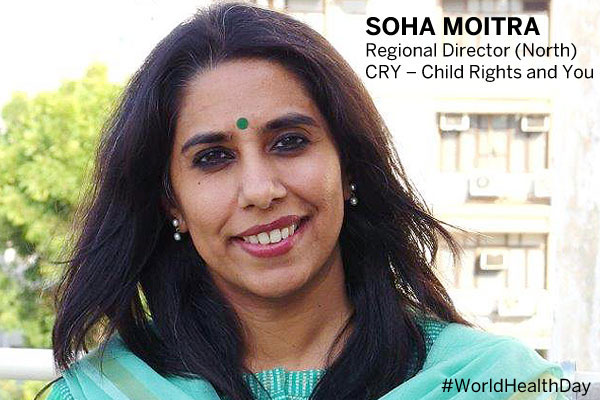Given that children form nearly 39 percent our population, the availability and quality of healthcare services for our children would be a strong marker for the success of Ayushman Bharat Programme. An insight by Soha Moitra, Regional Director (North) at CRY – Child Rights and You
With an emphasis on ‘wellness of the poor’, the recently announced government’s healthcare programme, Ayushman Bharat, seeks to re-imagine healthcare for India. It deliberates on two aspects — primary healthcare offered through 1.5 lakh health and wellness centres and financial support that is covered under the National Health Protection Scheme (NHPS).
What one is able to infer is that the newly conceptualised Health and Wellness Centre (HWC) will be an upgraded version of the existing sub-centres. That brings up the question—what are the additional facilities offered by the HWCs? While retaining the focus on services for Reproductive Maternal Newborn Child and Adolescent Health (RMNCH+) and communicable diseases, the list of services has been expanded to include management of non-communicable diseases, ENT, ophthalmological, geriatric care and screening of mental health ailments. Looking at the bouquet of services offered it’s indeed commendable that the HWCs are taking primary care up a notch. The goals of this aspirational initiative can be realised if we are able to learn from the challenges that the health system faces as present.
Our health system has been struggling to adhere to norms set by the Indian Public Health Standards (IPHS). According to Rural Health Statistics (RHS 2017), as of March 2017, there were 1,56,231 sub-centres functioning in the country, and there was already shortfall of 19 per cent. When it comes to personnel, there was a vacancy of 13.2 per cent against the sanctioned posts for Auxillary Nurse and Midwife (ANM) and 37.5 per cent vacancy for posts of male health workers. If HWCs have comprehensive maternal care as well as healthcare services to new borns, infants and children on their agenda, it would mean bringing specialists including gynaecologists, surgeons and paediatricians into rural areas in addition to filling existing vacancies, both of which has been a long-standing challenge. As on March 2017, overall 68.1 per cent of the sanctioned posts of specialists at Community Health Centres were vacant. The existing dearth in the number of specialists puts a big question on the new vacancies being created at HWCs.
Another important facet of care included in HWC is adolescent healthcare. An age group on the cusp of adulthood, adolescents and their concerns are to be handled delicately. While the adolescent friendly health clinics are already few and far between, the strong stigma attached to visiting these clinics to talk about contraception, sexual health, personal hygiene and menstrual health has led to poor uptake of services. Analysis of National Family Health Survey (NFHS) IV data shows that more than 25 per cent of our adolescent boys and girls aged 15-19 years do not have exposure to family planning methods and 85 per cent of girls within the same age-group do not have direct contact with health workers. Therefore, the health and wellness centres would have to approach this aspect in a new light so as to improve health seeking behaviour of adolescents.
Given that children form nearly 39 per cent our population, the availability and quality of services for our children would be a strong marker for the success of Ayushman Bharat Programme. This can be achieved through adequate investment in public provisioning of health services complemented by careful planning and implementation of the programme – for if the most marginalised child is able to receive quality health services, the impact would be transformative and inter-generational.
- Advertisement -



Comments are closed.